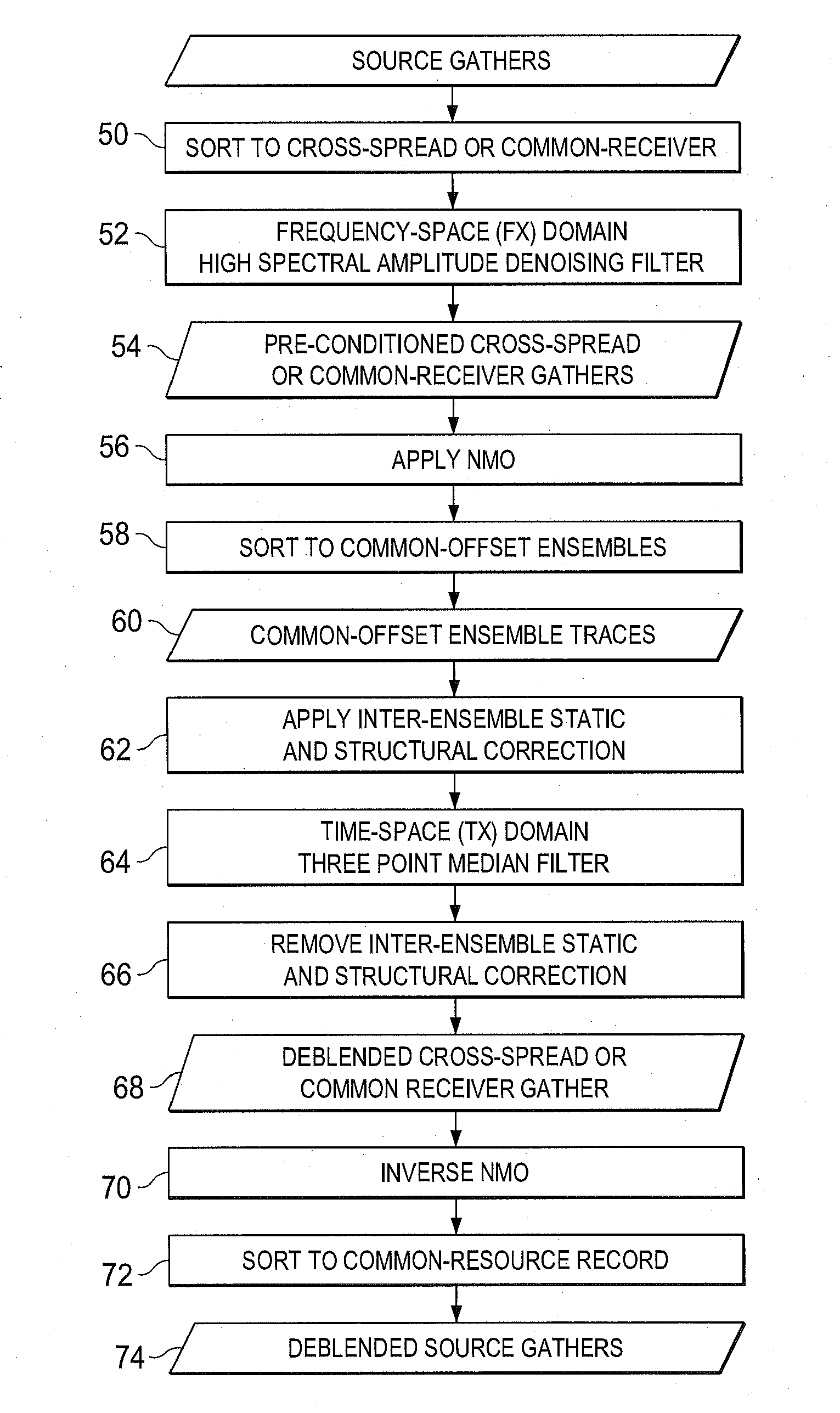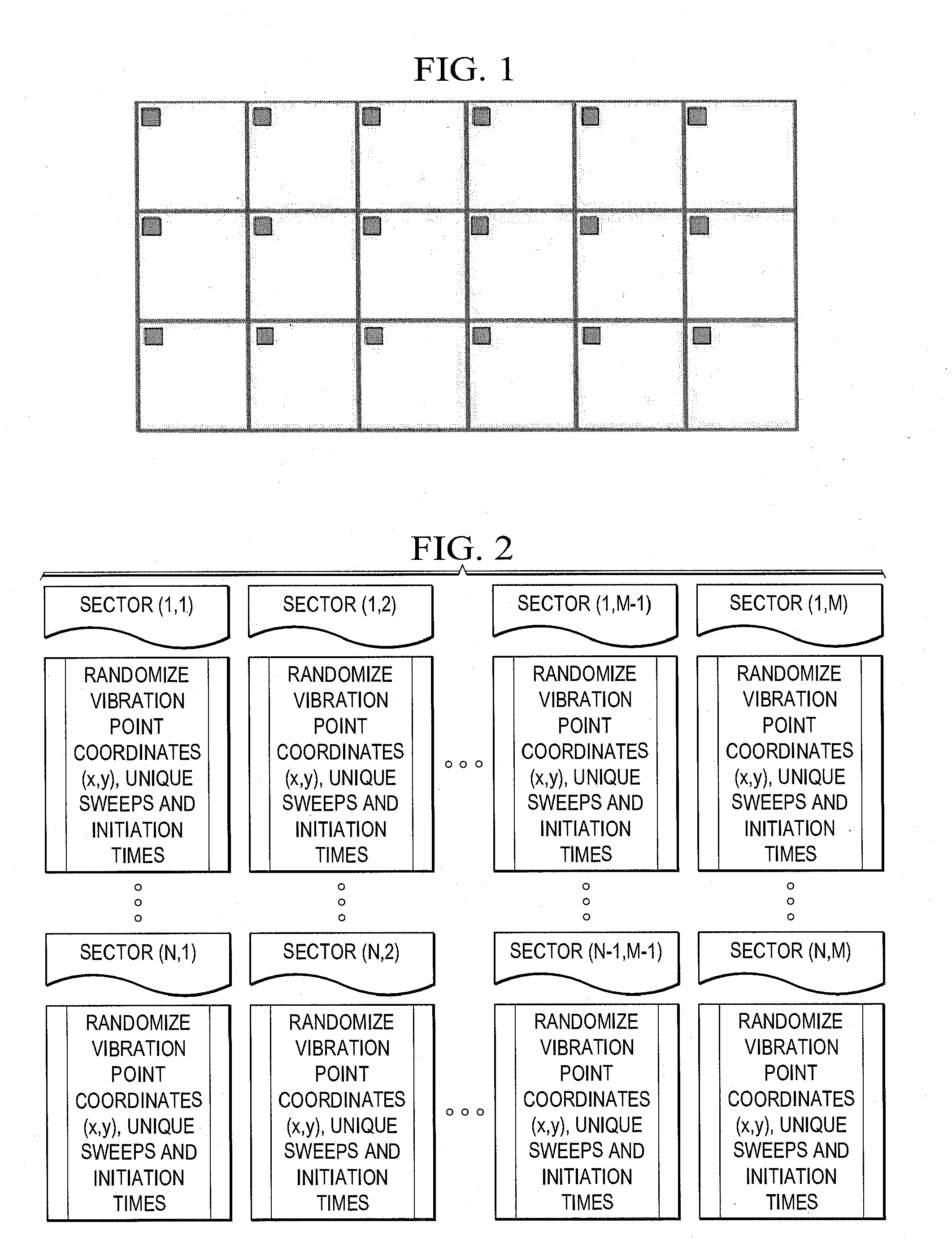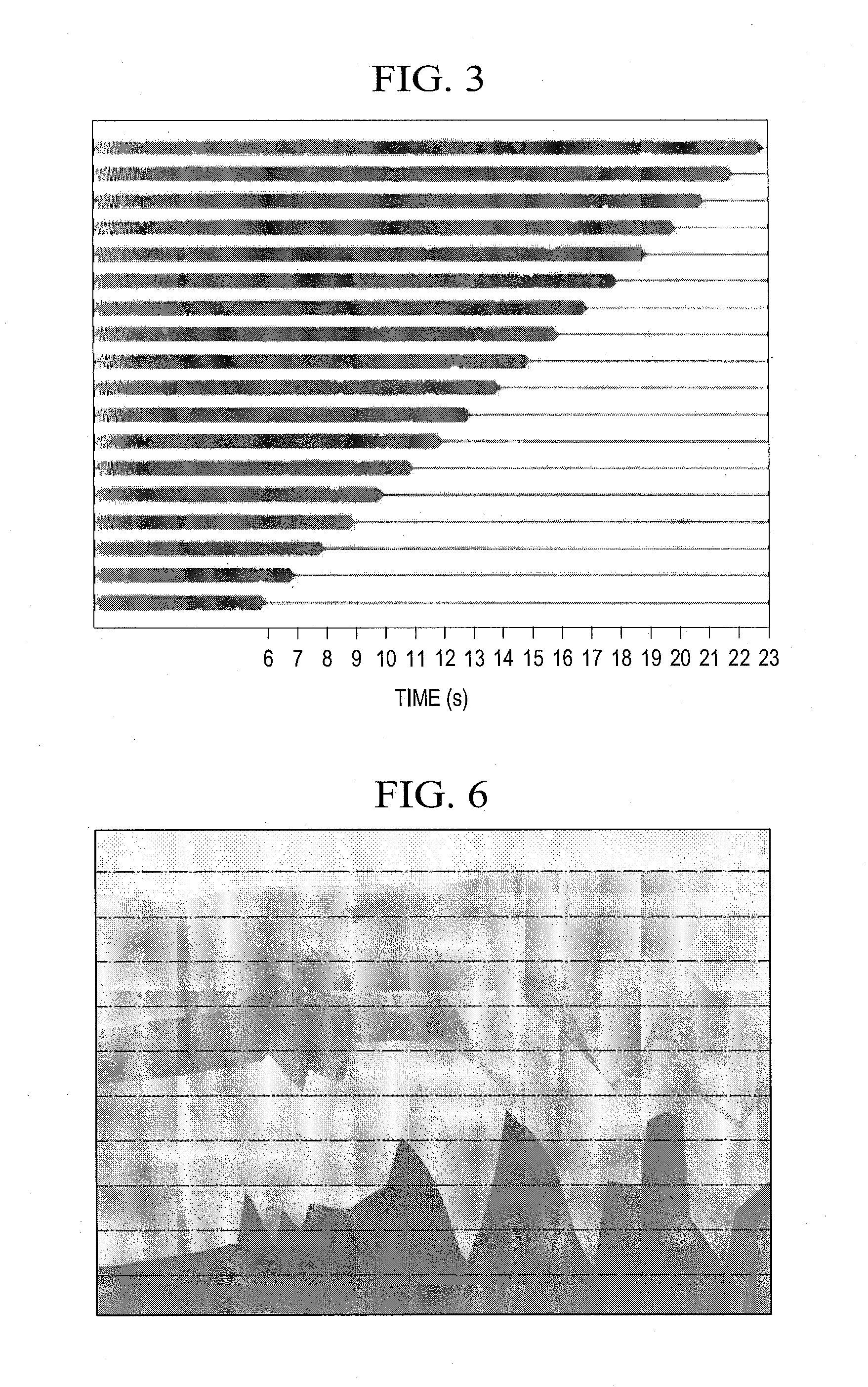Coupled time-distance dependent swept frequency source acquisition design and data de-noising
a technology of swept frequency source and coupled time-distance dependence, applied in the field of conducting and organizing land seismic surveys, can solve the problems of high-productivity vibroseis survey methods, the risk of interference between vibroseis sources, and the current economic or practical configuration of receivers
- Summary
- Abstract
- Description
- Claims
- Application Information
AI Technical Summary
Benefits of technology
Problems solved by technology
Method used
Image
Examples
Embodiment Construction
[0082]The present invention provides a new self-managed near-simultaneous swept frequency survey method. The present invention manages the distribution of near-simultaneous crosstalk noise (SMSC—self-manage near-simultaneous crosstalk). The present invention controls the amount of crosstalk interference in both time and offset on all processing sorted domains: common-source, common-receiver, common-offset, cross-spread, and common-offset vector tile domains. Time-distance rules between fleets are used to control the random initiation timing of vibroseis sweeps and a minimum distance separation are imposed for simultaneous sweeps. Additional crosstalk interference attenuation is achieved by using unique linear sweeps for each fleet. Using different sweep lengths with the same bandwidth for each dependent fleet reduces the total energy of surface wave and signal crosstalk interference after cross-correlation by 30 dB and 20 dB, respectively.
[0083]The minimum distance rule for simultan...
PUM
 Login to View More
Login to View More Abstract
Description
Claims
Application Information
 Login to View More
Login to View More - R&D
- Intellectual Property
- Life Sciences
- Materials
- Tech Scout
- Unparalleled Data Quality
- Higher Quality Content
- 60% Fewer Hallucinations
Browse by: Latest US Patents, China's latest patents, Technical Efficacy Thesaurus, Application Domain, Technology Topic, Popular Technical Reports.
© 2025 PatSnap. All rights reserved.Legal|Privacy policy|Modern Slavery Act Transparency Statement|Sitemap|About US| Contact US: help@patsnap.com



